Table of Contents (click to expand)
Oxygen, heat, and fuel are the three components that start a fire. They come together in different ways to start a wildfire.
The annual damage to the global economy caused by wildfires ranges from $4.6 million to $12318 million. It is estimated that around 4.6% of the world’s vegetated landmass burns every year. The recent wildfire in Los Angeles, now called ‘The Woolsey Fire’, burned 96,949 acres (39,234 hectares) of land, destroying 1,643 structures, killing 3 people and displacing 295,000 people.
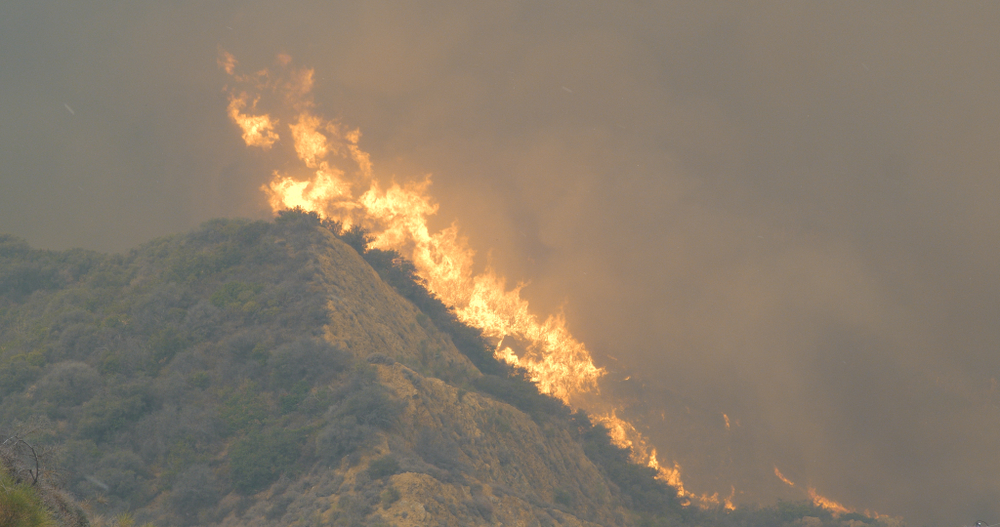
Clearly, wildfires wreak havoc in many people’s lives around the globe. Nations spend enormous amounts of resources in combating these fires, often relocating thousands of people due to unlivable conditions in the devastated areas. Dedicated fire units have been set up to counter the spread in the event of a wildfire. However, every good countermeasure starts with an understanding of the root cause of the problem.
The root cause in the case of a wildfire begins when three main ingredients come together.
The Fire Triangle
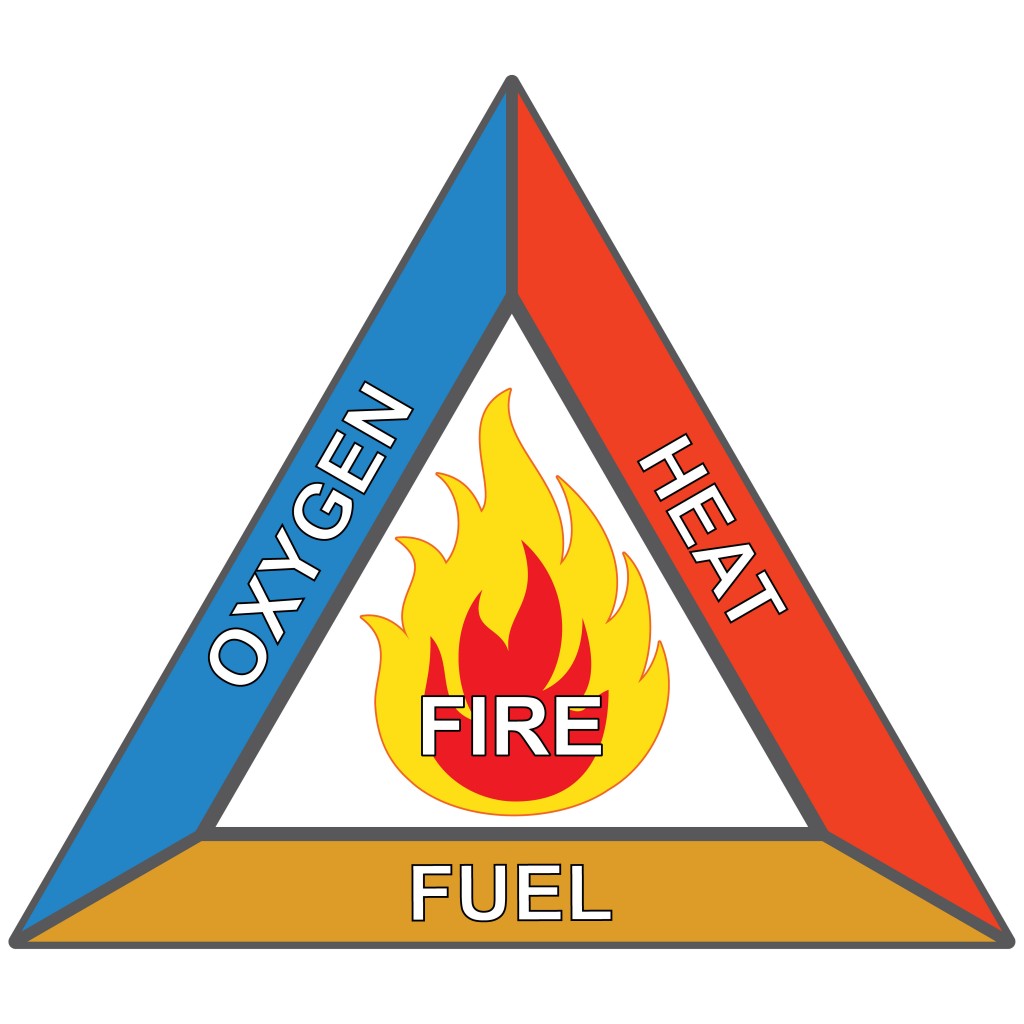
A fire occurs when three key ingredients combine together:
- Oxygen – Just as it is essential for us to breathe oxygen to survive, a fire can also be suffocated if oxygen is removed. Oxygen in the air combines with a source of fuel to create the right conditions at a molecular level for ignition to light it. However, maintaining a balance in the amount of oxygen is important. Too much oxygen and the fuel will give off vapors that don’t ignite, but too little oxygen will make it non-combustible. The vapor-to-oxygen ratio is known as the explosive or inflammable limit of a gas.
- Fuel – The thing that burns in the fire is the fuel. Fuels can take any form, ranging from deadwood in the forest and rough leaves on the ground to fabric, plastic, and liquids. Different types of fuels burn at different intensities, some even burning as high as 1000°C.
- Heat – A way of transferring heat to the oxygen and fuel completes the triad and gets the fire started. Lightning and lava are some common sources through which wildfires start. If the wildfire is caused by humans, the source could be unfinished cigarette butts, fireworks, sparks from power lines, or arson.
These three ingredients form in different ways to start a wildfire. The causes of a wildfire can be either of the two–manmade or natural. The main causes of wildfires are:
Lightning
This is one of the main culprits behind wildfires, and causes the most area burned of any type of wildfire. Dry climates create dry thunderstorms, and then lightning from these thunderstorms ignite the forest. Lightning comes in two varieties–cold and hot. Cold lightning has intense electric current, but is of a short duration. Hot lightning has less voltage in the current, but lasts for a longer duration; wildfires usually start from these long-lasting lightning bolts.
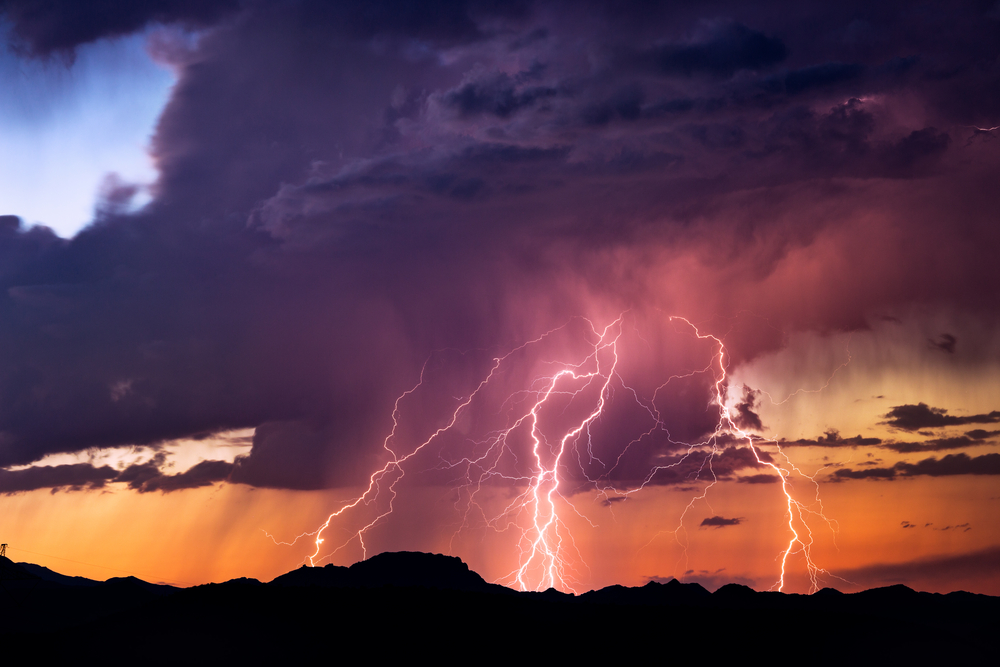
Dry Climate
A dry climate represents the perfect recipe for the fire triangle. Low rainfall causes draught, which means that the temperatures are probably very high. The trees, leaves, and sticks are hot from the sun and dehydrated, making them the perfect fuel for any source of ignition. These wildfires tend to begin in the afternoon when temperatures are soaring. The prevalent wind in dry climates then spreads the wildfire rapidly throughout an area. It is therefore only a matter of time before a heat source ignites the fuel, which could be lightning or any human activity, including camping, agriculture, animal husbandry, etc.
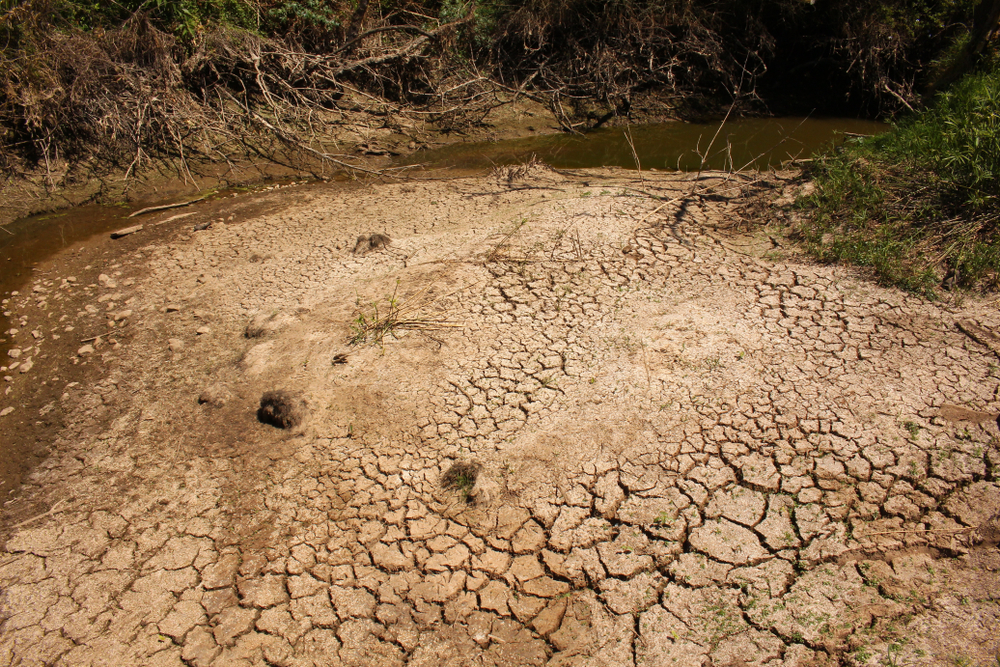
Volcanic Eruption
An active volcano could be surrounded by a large forest. When that forest ignites as a result of super-hot lava spills, it will burn the nearby landmass. The fuel does not need to be very flammable, because the lava from the eruption has an extremely high temperature, burning everything in its path. A volcanic eruption can be somewhat mediated before this happens, as the human population can be evacuated from the area it affects.
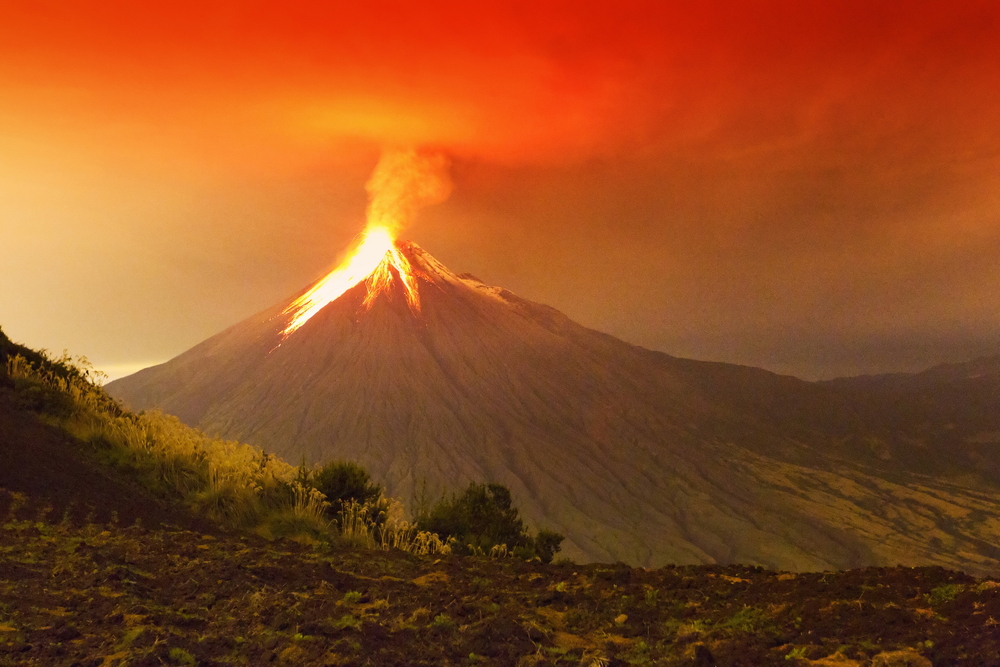
Human Error
Humans cause the largest number of wildfires, but the area affected is smaller in comparison to the other types, due to earlier detection. Such a wildfire could happen due to criminal arson—a willful attempt to burn a piece of land. Camping and smoking are also some of the common ways in which wildfires start.
Agriculture and animal husbandry can start wildfires, as land is sometimes burned knowingly to clear it for harvesting. Fires starting from faulty power lines have also been recorded. Humans usually provide the necessary ignition for the already flammable fuel and appropriate oxygen content.
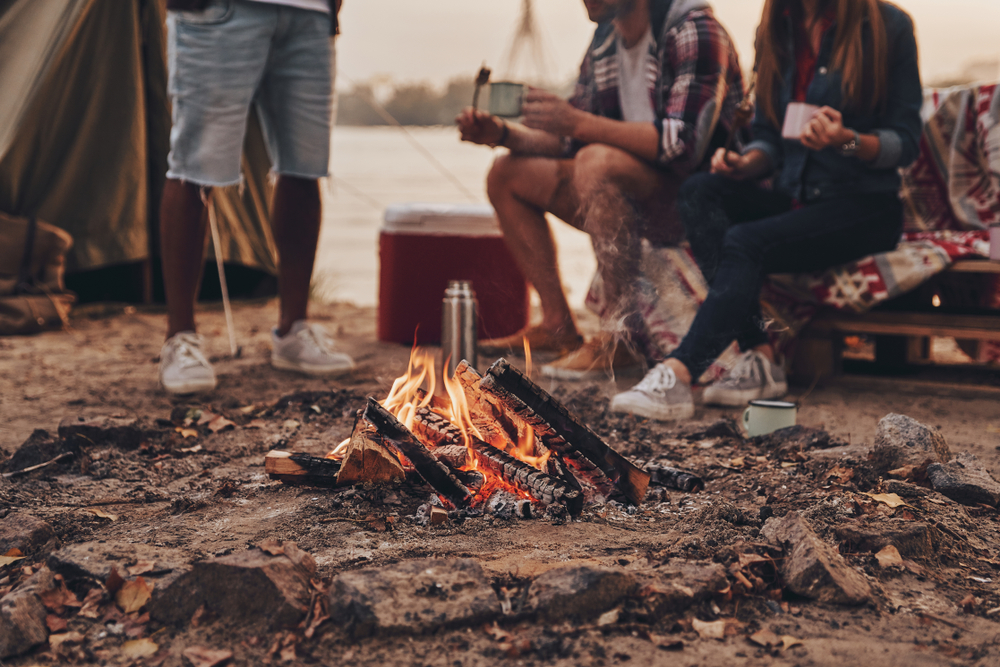
Also Read: 3 Fires Across The World That Always Keep Burning
Prevention And Mitigation
Knowing how a fire will spread in a given area can help in mitigating it. The spread of any wildfire depends on the flammable nature of the fuel present, the moisture in the air, and the topology of the forest, i.e., its vertical arrangement. Following are some of the ways in which fire spreads:
- Surface fire burns consistently, but at a very low intensity; the mature trees are not harmed in this situation. The organic fuel buildup over time increases the chances and the intensity of the fire. Occasional fuel removal through controlled fires effectively reduces the buildup of this fuel, making it less likely to start a larger fire.
- Ground fires are the most intense of all, destroying entire areas of landmass, leaving only the bare earth behind. These fires feed on the subterranean roots and duff – the forest ground that contains dead leaves, the bark from trees and other organic residues.
- Crown fires occur in the canopy level of the trees, spreading throughout that elevation. This fire is dependent on the height of the canopy, the density of the suspended material, vegetation moisture content and weather conditions. A human-made crown is known to occur in the Amazon Forest.
Preemptive measures are important to ensure that wildfires don’t get out of control. Many local fire safety norms allow natural fires to burn out in order to maintain the ecological order. Given that most fires are caused by human involvement, it, therefore, becomes imperative to control human activity in fire-prone regions.
Early detection of fire also helps in curtailing its spread. Fire lookout towers are set up to help achieve this. Satellite-based mapping and early detection surveillance systems have also been established to prevent the loss of landmass, property and human life.
In the case of an uncontrollable and damaging wildfire, firefighters try to suppress it with the available technological tools at their disposal. This could range from fire trucks and sandboxes to aerial drones spouting water and other means of fire extinguishing.
Also Read: Why Are The Australian Bushfires So Severe?
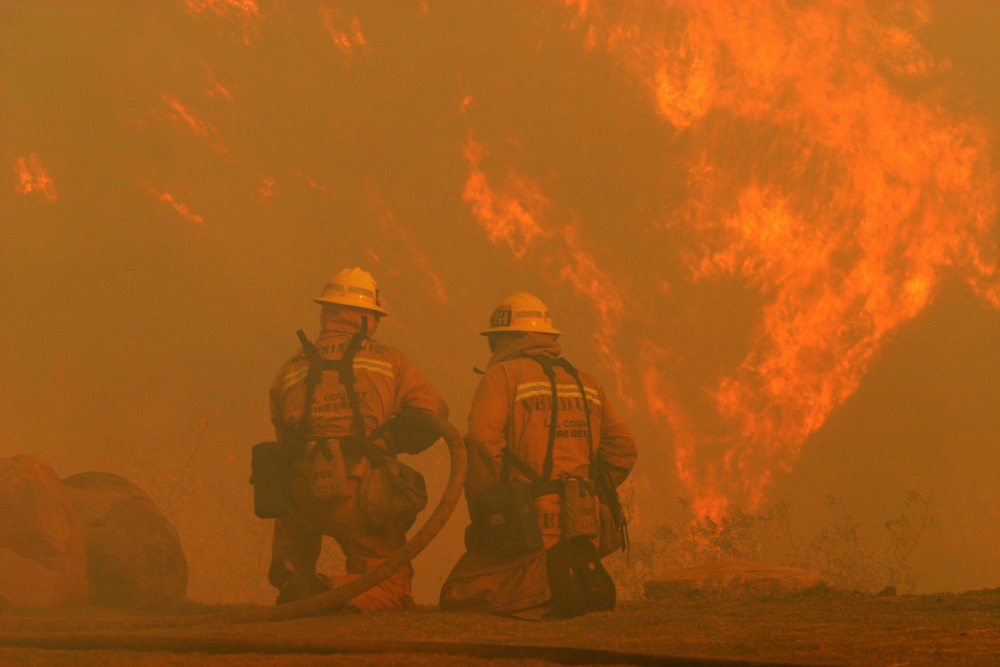
How well do you understand the article above!

References (click to expand)
- Doerr, S. H., & Santín, C. (2016, June 5). Global trends in wildfire and its impacts: perceptions versus realities in a changing world. Philosophical Transactions of the Royal Society B: Biological Sciences. The Royal Society.
- WOOLSEY FIRE INCIDENT UPDATE. Los Angeles County Fire Department
- Wildland Fire Facts: There Must Be All Three. The National Park Service
- Wildfire Causes and Evaluations (U.S. National Park Service). The National Park Service
